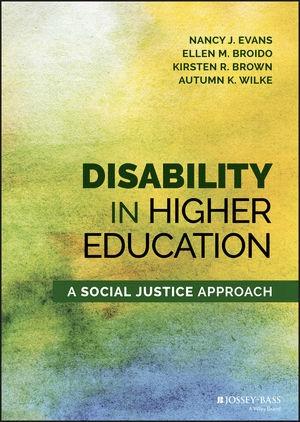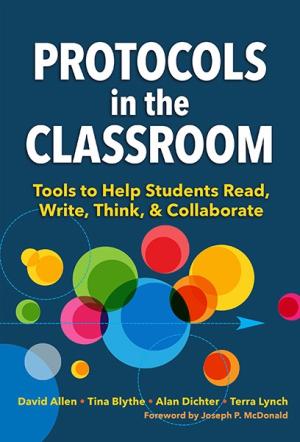Resources by David A. Schones

Disability in Higher Education: A Social Justice Approach examines how disability is conceptualized in higher education and ways in which students, faculty, and staff with disabilities are viewed and served on college campuses. Drawing on multiple theoretical frameworks, research, and experience creating inclusive campuses, this text offers a new framework for understanding disability using a social justice lens. Many institutions focus solely on legal access and accommodation, enabling a system of exclusion and oppression. However, using principles of universal design, social justice, and other inclusive practices, campus environments can be transformed into more inclusive and equitable settings for all constituents. The authors consider the experiences of students, faculty, and staff with disabilities and offer strategies for addressing ableism within a variety of settings, including classrooms, residence halls, admissions and orientation, student organizations, career development, and counseling. They also expand traditional student affairs understandings of disability issues by including chapters on technology, law, theory, and disability services. Using social justice principles, the discussion spans the entire college experience of individuals with disabilities, and avoids any single-issue focus such as physical accessibility or classroom accommodations. (From the Publisher)

Protocols in the Classroom is a helpful introductory handbook on “ways to structure a discussion so that it supports the learning of all participants” (2). It considers tools that foster students’ critical thinking, evaluative and discussion skills, and offers examples of each. Admittedly, ten of the eleven examples given are set in primary and secondary education. Even so, each chapter outlines the implementation of protocol pedagogy in different contexts, including higher education. The first section provides an overview for choosing “the right protocol for your goals and the needs of your students” (6). These first three chapters do not directly address the utilization of protocols to enhance classroom instruction: rather, they convey the benefits and pitfalls of employing these tools. Consequently, this section is invaluable for those new to protocol pedagogy. For others, it simply provides a refresher course. In both cases, the table on pages sixteen, seventeen, and eighteen is worth perusing. The table offers a snapshot of every protocol in section two. The contributors must have placed the table after the first chapter to encourage readers to better understand protocol theory, but because the figure is the quickest way to choose a protocol, its placement is not always convenient. The second section devotes a chapter to each of the eleven protocols. Every chapter follows the same format: “an introduction, a detailed set of steps, and tips for using the protocol with students” (7). These succinct descriptions of the protocols are suitable for quick reference and class preparation – the longest chapter is only four pages. However, their brevity results in a lack of critique of these tools. For example, the evaluative portion of the Microlab protocol only highlights the “positive reflections on the experience” (54) and does not address where the protocol could be improved. Such omissions are a missed opportunity to help educators better understand the challenges of implementing protocols in their own instruction. The third section “provides resources for deepening and expanding your work” after “you have gained a reasonable comfort level… using protocols” (8). This implies that these chapters should be avoided until readers are at ease using protocols in everyday classroom discussion. Yet, the troubleshooting chapter offers strategies for addressing “the common challenges… students experience as they develop facility with protocols” (114). While not tailored to each specific protocol, this chapter offers suggestions for adapting them to the needs of students. In this sense, these concluding chapters address many of the complications of using protocols. Protocols in the Classroom effectively describes the preparation and implementation of eleven different protocols in classroom instruction. As a handbook, it succeeds in quickly conveying the important steps in employing different protocols. However, for educators well-versed in the use of these tools, the brevity of each chapter does not offer space for the evaluation or improvement of protocols. This makes Protocols in the Classroom a helpful introductory text, but not an advanced handbook on the efficacy of protocol pedagogy.